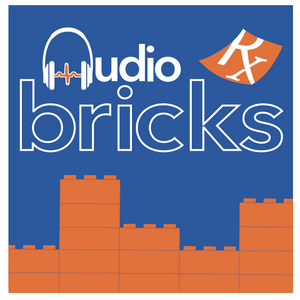Development of the Nervous System
Early in fetal development, the precursors of the major systems in the body are outlined. The three germ layers (endoderm, mesoderm, ectoderm) are formed during the third week of development. We’ll focus on the ectoderm, from which the entire nervous system (central and peripheral) forms.
But first, let’s back up to review the anatomy of the central nervous system (CNS) and peripheral nervous system (PNS) so that we know what the end products of their development are. The CNS comprises the brain and spinal cord; the PNS is composed of the 31 pairs of spinal and 12 pairs of cranial nerves and all the ganglia.
After listening to this AudioBrick, you should be able to:
List the derivatives of ectoderm.
Define neurulation and explain how it occurs, including closure and the dates of neuropore closure.
Describe the origin, migration, and fate of neural crest cells, particularly those that form the peripheral nervous system.
Explain how the neural tube is organized into three layers.
Describe how the spinal cord develops from the neural tube, and describe the contributions of each to these layers to the structure of the mature spinal cord, with emphasis on the alar and basal plates.
Describe the development of the brain, including the five brain vesicles, the brainstem, and the cerebral cortex.
You can also check out the original brick on the development of the nervous system from our Neurology and Special Senses collection, which is available for free.
Learn more about Rx Bricks by signing up for a free USMLE-Rx account: www.usmle-rx.com
You will get 5 days of full access to our Rx360+ program, including nearly 800 Rx Bricks. After the 5-day period, you will still be able to access over 150 free bricks, including the entire collections for General Microbiology and Cellular and Molecular Biology.
***
If you enjoyed this episode, we’d love for you to leave a review on Apple Podcasts. It helps with our visibility, and the more med students (or future med students) listen to the podcast, the more we can provide to the future physicians of the world.
Follow USMLE-Rx at:
Facebook: www.facebook.com/usmlerx
Blog: www.firstaidteam.com
Twitter: https://twitter.com/firstaidteam
Instagram: https://www.instagram.com/firstaidteam/
YouTube: www.youtube.com/USMLERX
Learn how you can access over 150 of our bricks for FREE: https://usmlerx.wpengine.com/free-bricks/
from our Musculoskeletal, Skin, and Connective Tissue collection, which is available for free.
Learn more about Rx Bricks by signing up for a free USMLE-Rx account: www.usmle-rx.com
You will get 5 days of full access to our Rx360+ program, including nearly 800 Rx Bricks. After the 5-day period, you will still be able to access over 150 free bricks, including the entire collections for General Microbiology and Cellular and Molecular Biology.
***
If you enjoyed this episode, we’d love for you to leave a review on Apple Podcasts. It helps with our visibility, and the more med students (or future med students) listen to the podcast, the more we can provide to the future physicians of the world.
Follow USMLE-Rx at:
Facebook: www.facebook.com/usmlerx
Blog: www.firstaidteam.com
Twitter: https://twitter.com/firstaidteam
Instagram: https://www.instagram.com/firstaidteam/
YouTube: www.youtube.com/USMLERX
Learn how you can access over 150 of our bricks for FREE: https://usmlerx.wpengine.com/free-bricks/
